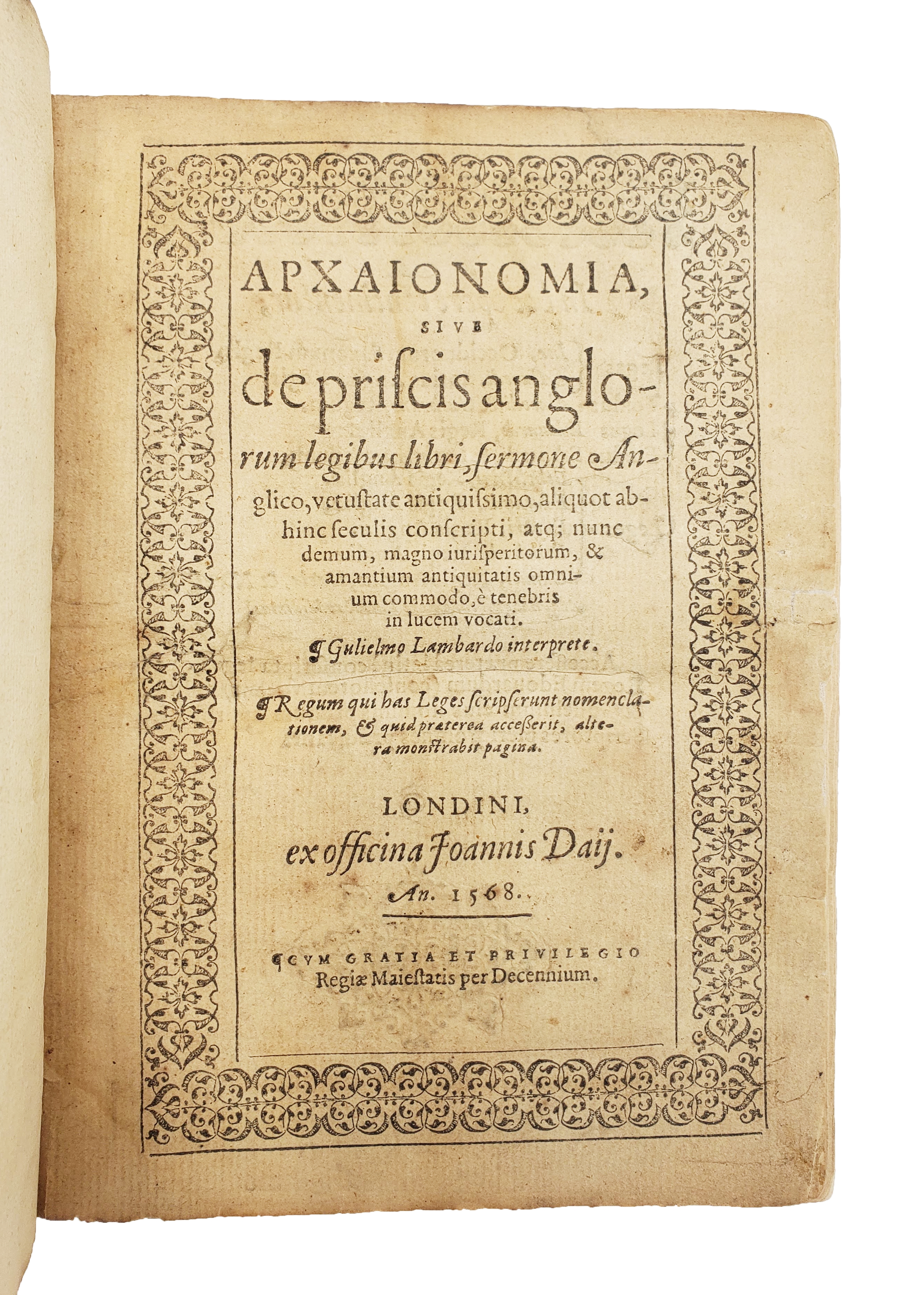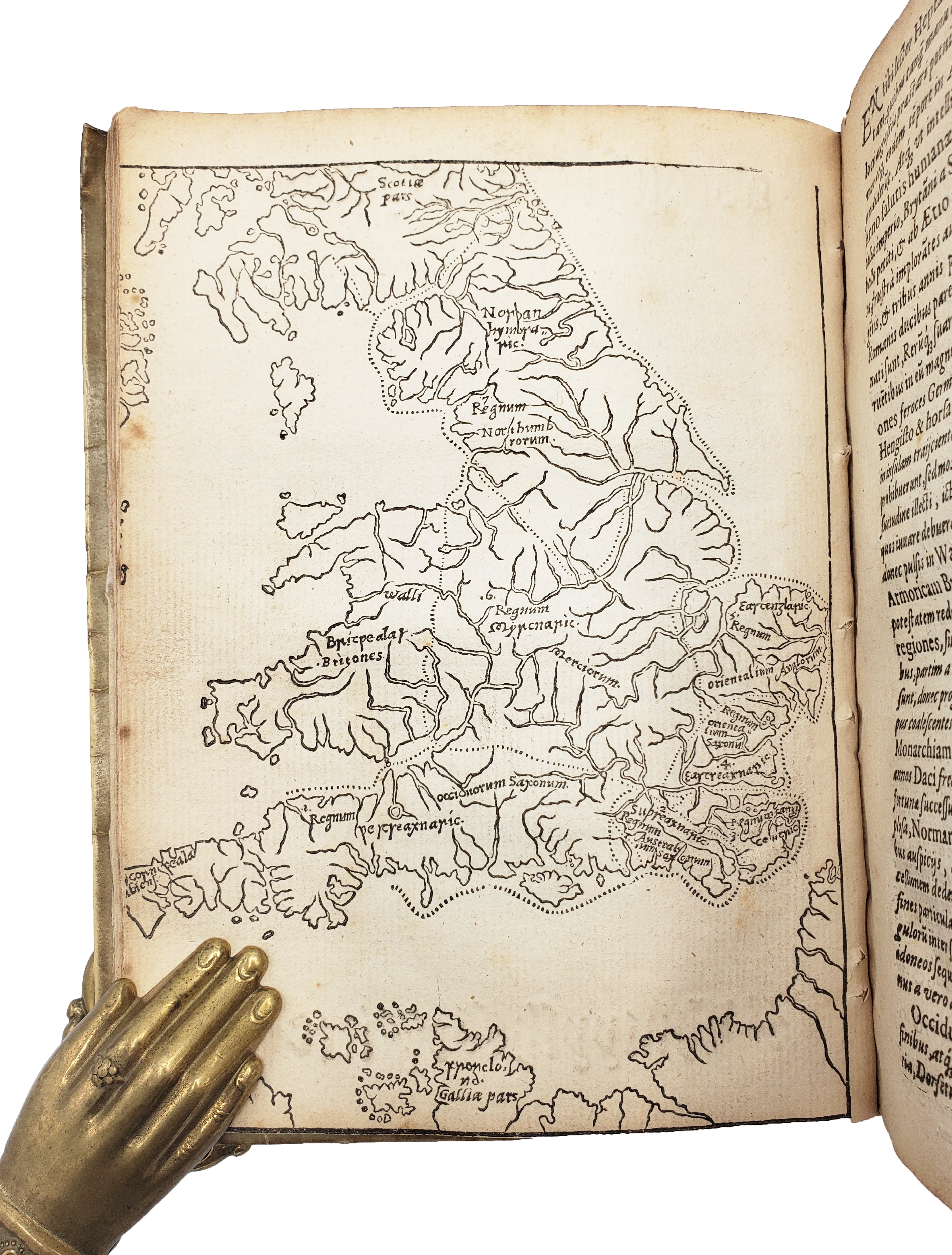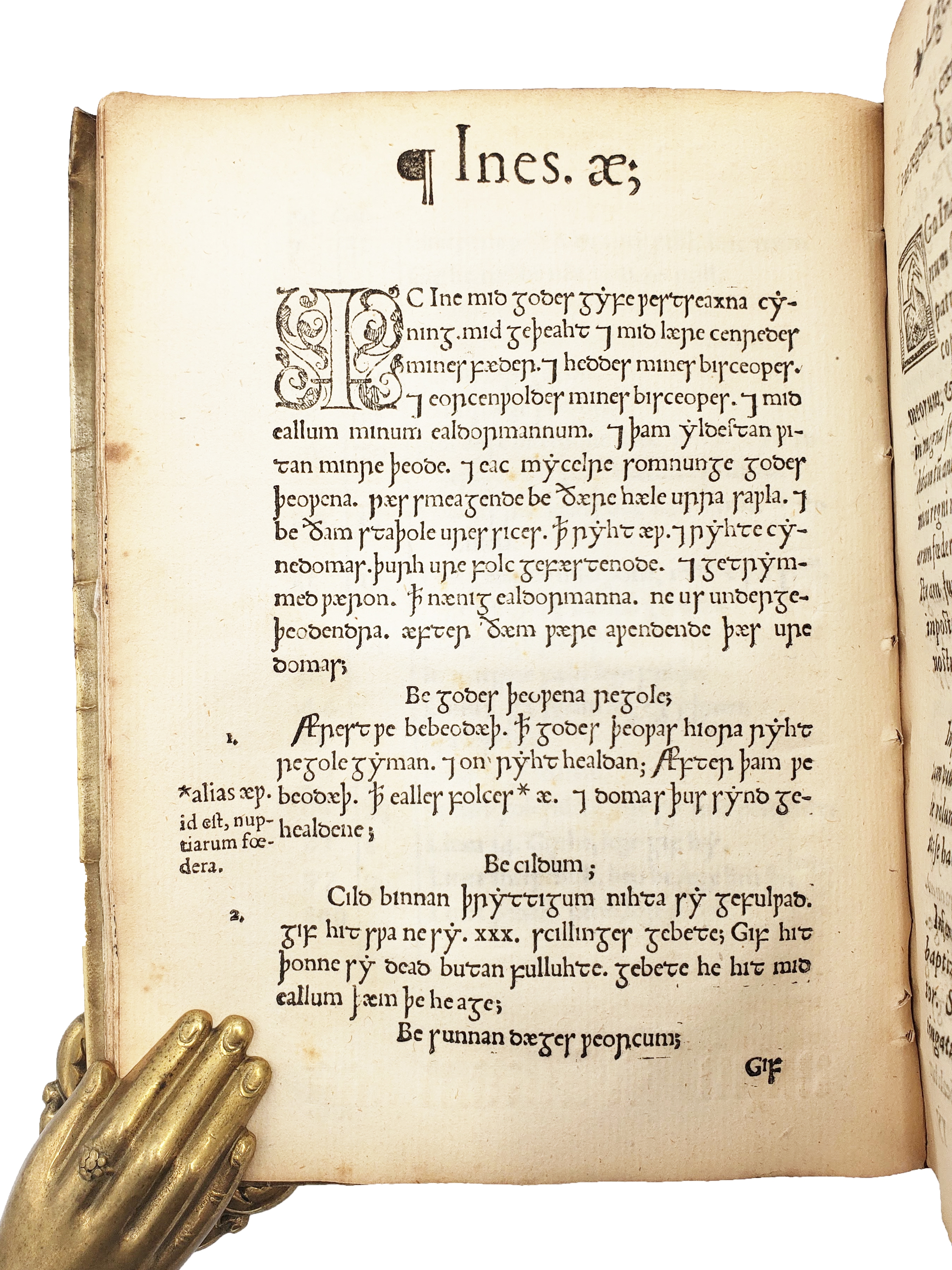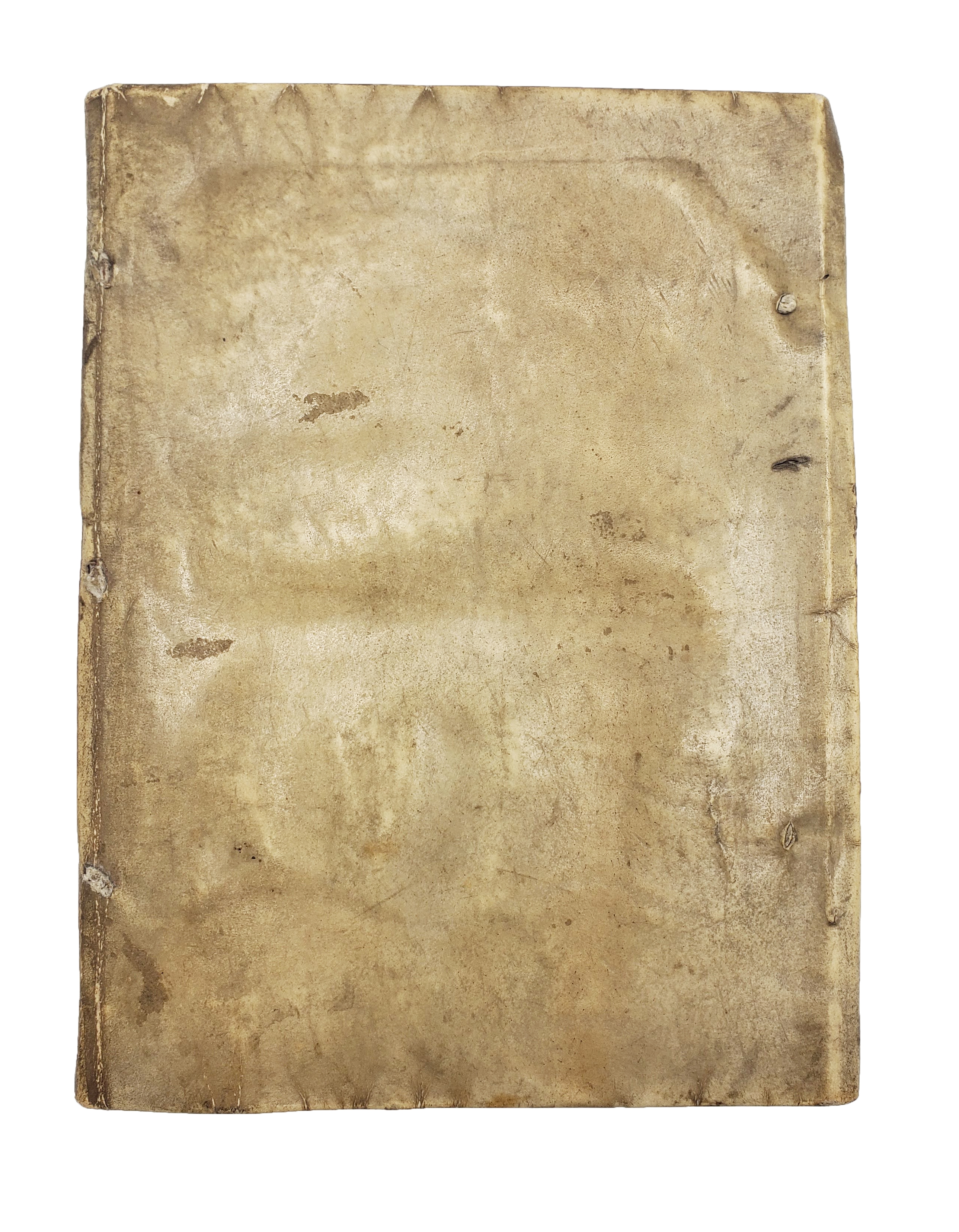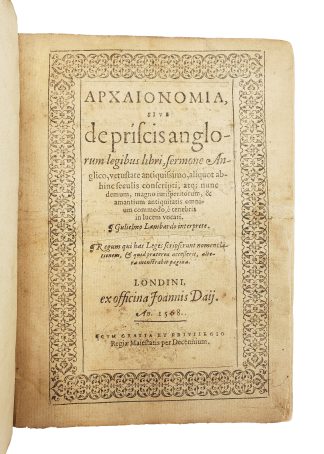LAMBARDE, William
BOOK BORROWED WITH COLLATERAL
Archaionomia, sive de priscis Anglorum legibus libri.
London, ex officina Joannis Daii, 1568.£4,750.00
FIRST EDITION. 4to. ll. (xix) 140 (iii). Roman, italic and Anglo-Saxon letter. T-p within typographical border. Full-page woodcut map of England and Wales. Woodcut initials, typographical head- and tailpieces. Contemp. limp vellum, remains of ties, spine with later gilt lettering. One or two contemp. ms. annotations in ink, contemp. inscription in a different hand to rear fly: ‘At the returne of this booke I am to repay 10s – Lawrence Sadler.’ First quire browned, and t-p repaired at fore edge, second quire with light waterstain to lower half, occasionally recurring, waterstain to margin of Gg3. Last few quires with very faint intermittent wormtracks to upper margin, not affecting text. Light yellowing and spotting, a good copy.
First edition of William Lambarde’s catalogue of the legal code of Anglo-Saxon England, printed for the first time in Old English and with a parallel translation into Latin. The text contains the codes instituted by kings Ine, Alfred, Edward the Elder, Aethelstan, Edmund, Edgar, Aethelred ‘the Unready,’ Canute, William the Conqueror and Edward the Confessor, as well as two treaties between Anglo-Saxons and the Danish king Guthrum. Also included is the ‘Senatusconsultum de Montculis Walliae,’ literally the decree of the Senate of the Welsh Mountain-Dwellers, which was supposedly a body of lawgivers governing what was later the Welsh Marches; there is a note explaining that there is some uncertainty over the age of the document, which may have been written in the age of Aethelred, but that it is undoubtedly of great antiquity.
Continuing work by, and using the manuscripts of, the antiquarian Lawrence Nowell, Archaionomia was published as part of Archbishop Matthew Parker’s project to identify a cohesive and independent Anglo-Saxon church that could be used to advance the legitimacy of the Elizabethan Settlement of 1559. It was felt that publishing Anglo-Saxon royal legal codes would promote the image of a royally sanctioned, primitive English church that had existed before the corruptions of medieval Catholic canon law and papal authority. Equally the use of John Day’s recently introduced Anglo-Saxon type was part of a linguistic project to advance the use of the vernacular in the English church, preceded by Day’s printing of Parker’s Testimonie of Antiquitie, which reproduced a sermon in Old English with modern English translation.
The contemporary inscription appears to indicate that Lawrence Sadler was responsible for lending the book having taken the (not insignificant) payment of 10s as collateral or as a deposit, which was a common practice in institutional libraries like those of the Oxford and Cambridge colleges – called the ‘electio’ – but could also have been used by booksellers; there was a bookseller called Lawrence or Laurence Sadler trading between 1631 and 1664 in Little Britain (BBTI). Whether the book was returned is unclear. The contemporary annotations, in a neat humanist hand, indicate someone familiar with the subject. One correction amends an assertion in one of the legal codes that thanes were equivalent in stature to priests (sacerdotes), correcting this to mean their oaths were of the same import (‘Sacerdotes aeque ac Thani jusjurandu[m]’ [aestima[n]t]). This annotation appears in other copies and was a key point of contention, since it reduced the status of the nobility while increasing the importance of the priesthood, neither desirable for those of a parliamentary or Protestant persuasion.
ESTC S122075. Lowndes, III, 1090. Lucas, “Catalogue of Early Printed Books Containing Anglo-Saxon” in Printing Anglo-Saxon from Parker to Hickes and Wanley (Leiden: 2024),1568.2.

